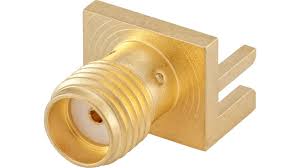Power splitters are indispensable in modern RF communication systems. They distribute signals across multiple devices or components, ensuring efficient operation in various applications such as telecommunications, broadcasting, and advanced networks like 5G. This article explores the concept of power splitters, their types, applications, and critical factors to consider when selecting one.
Understanding Power Splitters and Their Purpose
A power splitter is an electronic device designed to divide an input radio frequency (RF) signal into two or more output signals. These outputs share the same frequency and phase as the input but with reduced power levels. The reduction depends on the number of outputs, ensuring balanced signal distribution.
Power splitters are integral to systems where multiple devices or components require the same signal. They minimize signal loss and ensure efficient transmission. In advanced networks like 5G, power splitters, often referred to as 5G power splitters, handle high-frequency signals while maintaining performance and reliability.
Types of Power Splitters
- Resistive Power Splitters
These splitters use resistors to divide signals. While simple and cost-effective, they tend to have higher insertion loss compared to other types. They are typically used in applications where power loss is acceptable, and the focus is on cost-efficiency. - Wilkinson Power Splitters
Wilkinson power splitters are highly efficient and offer low signal loss with excellent isolation between output ports. Their design incorporates quarter-wavelength transmission lines, making them ideal for systems where signal integrity is paramount. - Hybrid Couplers
Hybrid couplers are another type of power splitter, often used in applications requiring phase shifts or specific signal combinations. They combine features of resistive and Wilkinson splitters, balancing simplicity with performance.
Each type of power splitter serves distinct purposes, making the choice dependent on the specific requirements of the application.
Applications of RF Power Splitters
Power splitters, especially RF power splitters, are versatile devices found in various industries. Below are some key applications:
Telecommunications
Telecommunications systems rely heavily on power splitters to distribute RF signals to multiple antennas or receivers. These splitters ensure consistent signal strength across all outputs, enabling seamless communication in mobile networks, base stations, and infrastructure supporting wireless communication.
Broadcasting
In broadcasting, power splitters play a crucial role by delivering signals to multiple transmission points. This ensures uniform signal quality across a wide coverage area. Their ability to maintain signal integrity is vital for both audio and video broadcasting.
5G Networks
The rapid expansion of 5G networks has brought advanced requirements for signal distribution. 5G power splitters manage high-frequency signals effectively, enabling communication systems to meet the demands of high-speed data transfer, low latency, and massive connectivity. These splitters are designed to handle the unique challenges of 5G deployments.
Satellite Communication
Satellite communication systems use power splitters to distribute signals from antennas to multiple receivers or devices. This ensures consistent reception quality and enhances the efficiency of data transmission across interconnected devices.
Factors to Consider When Choosing a Power Splitter
Selecting the right power splitter is essential for achieving optimal system performance. Below are key factors to evaluate:
- Frequency Range
Ensure the power splitter supports the frequency range required by your application. Compatibility with the operating frequency ensures minimal signal loss and reliable performance. - Number of Outputs
Choose a splitter that matches the number of outputs your system requires. Splitters with more outputs experience greater signal attenuation, so select one that balances your system’s needs with performance requirements. - Insertion Loss
Insertion loss refers to the reduction in signal strength as it passes through the splitter. Low insertion loss is critical for applications requiring high signal strength. This ensures efficient signal distribution and minimizes performance degradation. - Isolation Between Outputs
High isolation prevents interference between output signals. This is crucial in multi-device systems where overlapping signals can cause degradation or operational issues. - Power Handling Capability
Select a power splitter capable of handling the input power of your system. Overloading the splitter can lead to inefficiency or even damage. Ensure the device meets or exceeds the power requirements of your application. - Environmental Durability
For outdoor or harsh environments, choose a splitter with robust construction. Weather-resistant materials and protection against temperature fluctuations are critical for ensuring long-term reliability.
Installation and Maintenance of Power Splitters
Proper installation and maintenance are essential to maximize the lifespan and performance of power splitters. Adhering to best practices ensures minimal signal loss and optimal functionality:
- Installation Guidelines
Follow the manufacturer’s instructions for installation. Use appropriate connectors and ensure proper grounding. Avoid bending cables too sharply, as this can degrade performance or cause damage. - Regular Inspections
Conduct periodic checks for physical damage, wear, or environmental degradation. Identifying issues early allows for timely repairs or replacements, preventing disruptions in signal distribution. - Interference Management
To avoid electromagnetic interference (EMI), install the splitter away from potential sources of interference. Shielded splitters provide additional protection and help maintain signal integrity.
Conclusion
Power splitters are indispensable components in modern RF systems, ensuring efficient and reliable signal distribution. From telecommunications and broadcasting to advanced 5G networks, these devices play a critical role in enhancing performance. By selecting the appropriate power splitter—whether it is an RF power splitter or a specialized 5G power splitter—and maintaining it properly, you can ensure optimal operation of your communication system.

Be the first to comment on "Power Splitter: Essential for Efficient Signal Distribution"